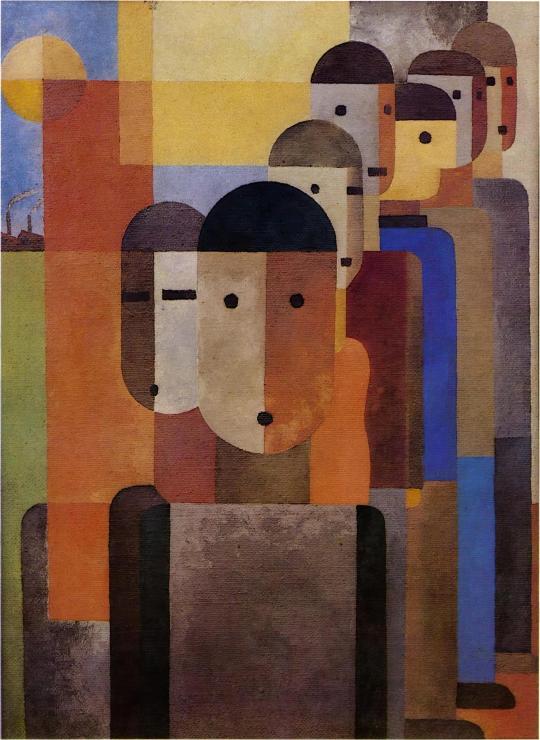#franz wilhelm seiwert
Photo

August Sander. The painter Franz Wilhelm Seiwert. Cologne. 1928
I Am Collective Memories • Follow me, — says Visual Ratatosk
#BW#Black and White#Preto e Branco#Noir et Blanc#黒と白#Schwarzweiß#retro#vintage#August Sander#Franz Wilhelm Seiwert#Cologne#1928#1920s#20s#portrait#肖像#画像#retrato#Porträt
36 notes
·
View notes
Text
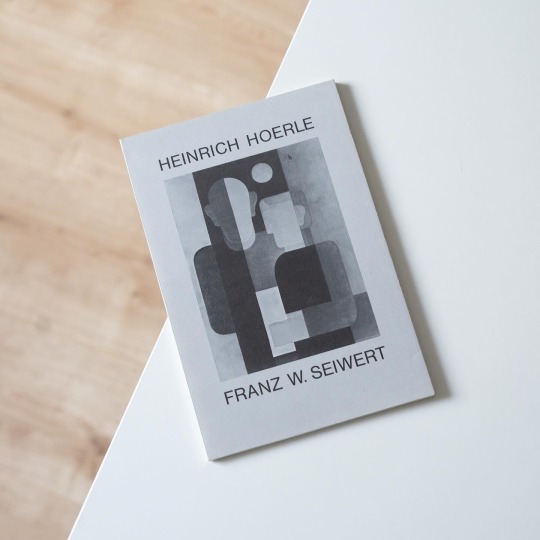
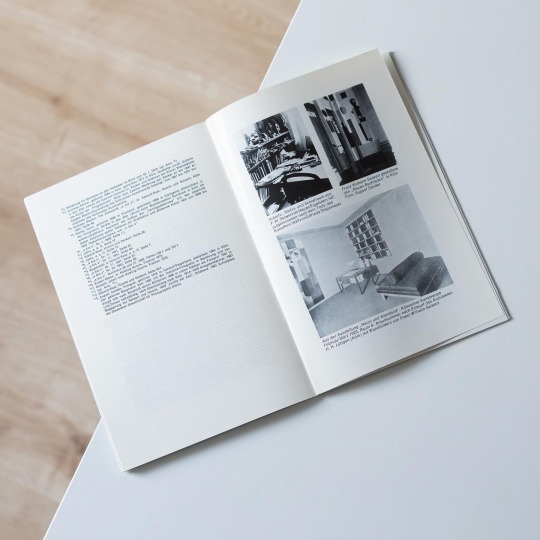
One of the most interesting artist groups of the Weimar Republic were the „Kölner Progressive“, the Cologne Progressives, circling around painters Heinrich Hoerle (1895-1936) and Franz Wilhelm Seiwert (1894-1933). The latter two not only were friends but also shared the conviction that art could be used to agitate and inform workers about social and societal shortcomings (both were staunch communists). I recently stumbled across a series of biographical writings issued by the city of Cologne dedicated to key personalities of the city’s history and, surprisingly, one volume from 1975 is a double biography of Hoerle and Seiwert. In it Walter Vitt on a mere 44 pages draws a lively picture of the social and artistic environment in which Hoerle, Seiwert and the Cologne Progressives flourished, highlights key works of both artists and in an impressive catalogue of notes manages to provide even more information and cross-references. So, despite its age and research on the group and the artists involved having advanced substantially the present little booklet nonetheless is an unexpectedly complete read warmly recommended to anyone new to either the artists or the artists’ group.
#heinrich hörle#franz wilhelm seiwert#cologne progressives#art book#art history#german art#book#vintage book#modern art
20 notes
·
View notes
Text
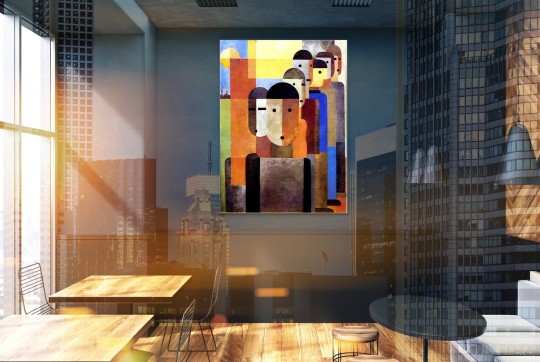
Franz Wilhelm Seiwert, Workers
0 notes
Photo

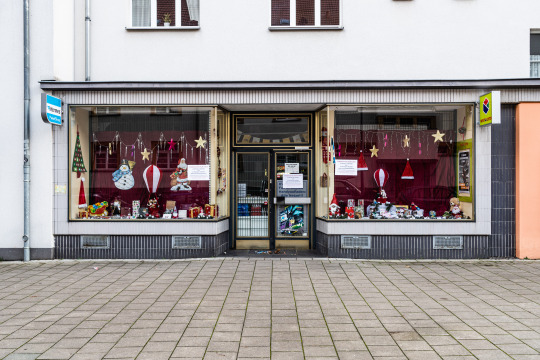
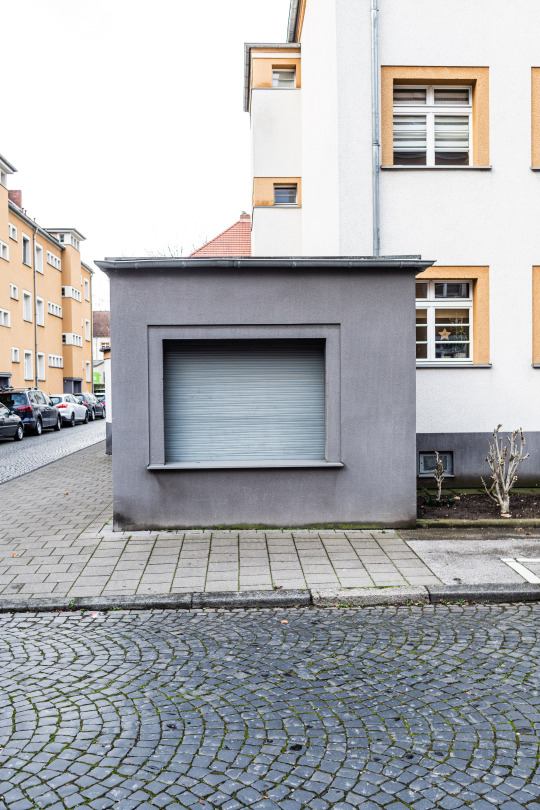

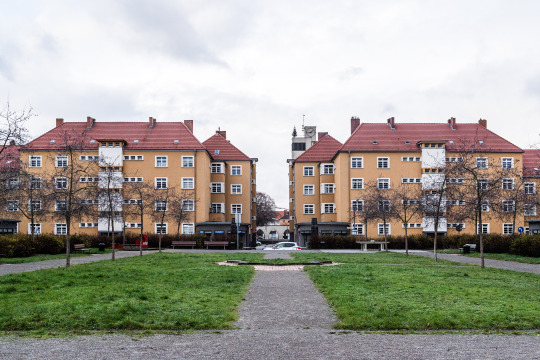


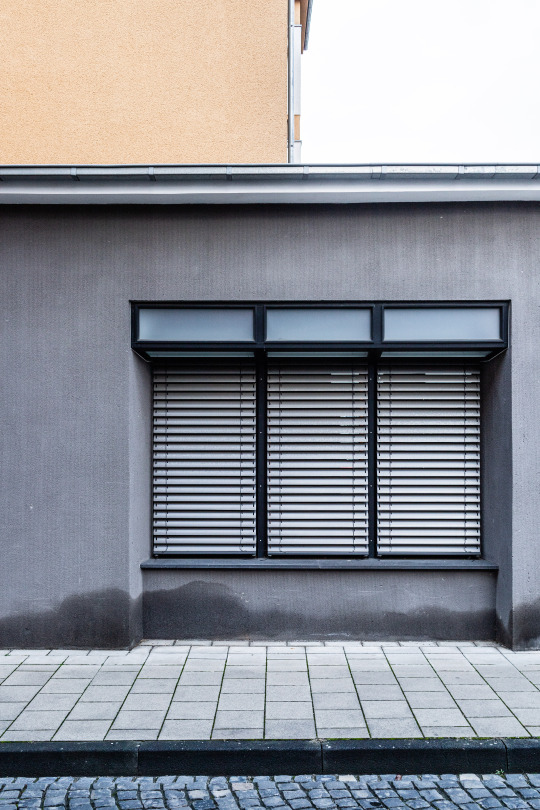

wohnsiedlung bickendorf II // köln bickendorf
rosenhofsiedlung
for a long time, I had planned to drive all the way to the end of subbelrather strasse to bickendorf to visit the housing estate in the style of the new objectivity.
over the christmas holidays, I took advantage of the peace and quiet to tackle this project. nn retrospect, it was a very good idea because there were hardly any people or cars on the road to disturb me while I was taking pictures.
the settlement is functionally structured with the two centres of the central square and the church connected by a road, thus creating mutual visual relationships.
the houses themselves are kept simple, the variety comes from the colour concept of the contemporary cologne artists, franz w. seiwert and heinrich hoerle.
architects: wilhelm riphahn & caspar maria grod
fab concept of the façades: franz w. seiwert & heinrich hoerle
completion: 1931
#köln#cologne#köln bickendorf#neues bauen#new objectivity#neue sachlichkeit#weimar republic#architecture#photography#architecture photography#urban#urban photography#moderne#design#rosenhofsiedlung#nrw#germany#wilhelm riphahn#caspar maria grod#franz w seiwert#heinrich hoerle
114 notes
·
View notes
Photo
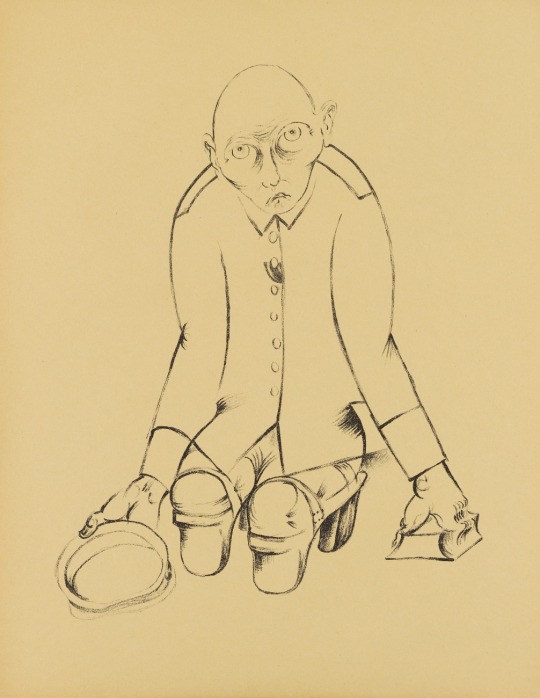
Heinrich Hoerle Krüppel (Die Krüppelmappe) 1920 Series of 12 lithographs. Each on firm brownish paper 58.9 x 45.8 cm. - Together with title sheet loosely laid in original half-linen portfolio 64.4 x 49.5 cm with collage of the title motif "Krüppel" (Backes 16) as a linoleum cut on Japan paper 16.8 x 12.2 (23 x 17.3 cm) Unsigned. The title sheet with index and colophon numbered in pencil. Copy 92/100. - Rare. Published by the artist "Heinrich Hoerle, Cöln-Lindenthal", Cologne 1920. - The sheets with minimal traces of age. The thinner title sheet (simili Japan) with a minor defect in the upper margin and backed with paper strips verso. The portfolio slightly wavy with pressure marks. Following the brochure for the 1920 edition of “Krüppel“, published by the artist, it seems a total edition of 300 copies with hand-signed lithographs was planned, 50 of which were printed on Japan laid paper with an original colour drawing as the title page. However, there are unsigned series on simpler, heavier types of paper, featuring an edition numeration of 100 in the colophon. The "Krüppelmappe" is one of the artist's early expressionist masterpieces. Probably designed at the end of 1919, it is not only a critical contemporary commentary on the social misery of those disabled in the war - in the "Sozialistischen Republik" of 30.01.1920, Franz Wilhelm Seiwert published a contribution to the first exhibition of the portfolio in Cologne under the title "Krupp-Krüppel" - it also sensitively reflects the deeply human and emotional aspects of physical mutilation in the artistic sequence of the various pictures. Otto Dix continued the theme in the large-format painting "Die Kriegskrüppel", among others, from the same year, formerly in the Stadtmuseum Dresden, confiscated in 1937 and lost since then (cf. Löffler 1920/8 with illus., cf. also the etching of the same name Karsch 6). Catalogue Raisonné Backes Druckgraphik 16, 17 Certificate We would like to thank Dirk Backes, Aachen, for kind scientific advice. Provenance Private possession, Rhineland Literature Die Aktion. Wochenschrift für Politik, Literatur und Kunst, Berlin 1920, 10th year, with illus.; a bis z, organ der gruppe progressiver künstler, Cologne, Dec. 1931, issue no. 20 with illus.; Walter Vitt, Heinrich Hoerle und Franz Wilhelm Seiwert. Die Progressiven, Cologne 1975, p. 19 with illus.; U. Bohnen, Das Gesetz der Welt ist die Änderung der Welt. Die rheinische Gruppe progressiver Künstler (1918-1933), Berlin 1976, no. 8 with illus. p. 27 Exhibitions Cologne January 1920 (Lichthof des Kunstgewerbemuseums); Moscow 1924 (Erste allgemeine Deutsche Kunstausstellung); Frechen 1970/1971 (Kunstverein Frechen e.V.), Hoerle und sein Kreis, cat. no. 154 with illus.; Cologne 1975 (Kölnischer Kunstverein), Vom Dadamax zum Grüngürtel - Köln in den 20er Jahren, n. cat. no., with illus. p. 100/101; Berlin 1975 (Akademie der Künste Berlin/ Neue Gesellschaft für Bildende Kunst), Politische Konstruktivisten. Die "Gruppe progressiver Künstler" Köln 1919-1933, with illus.; Cologne 1980 (Kölnischer Kunstverein), Max Ernst in Köln. Die rheinische Kunstszene bis 1922, cat. no. 165 with illus. https://www.lempertz.com/en/catalogues/lot/1110-1/436-heinrich-hoerle.html
5 notes
·
View notes
Text

August Sander, Franz Wilhelm Seiwert, 1924 x
1 note
·
View note
Text

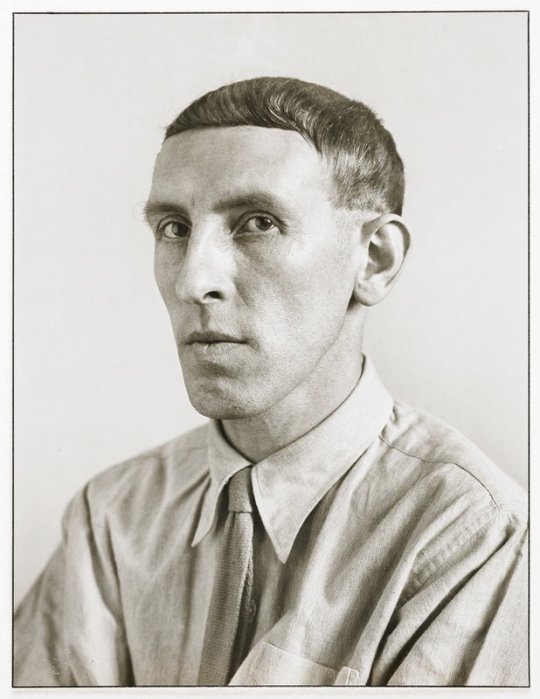
Franz Wilhelm Seiwert, constructivist painter, 1894-1933.
0 notes
Photo

Allemagne : Nouvelle Objectivité : Marcel Breuer : Chaise Piscator; Telephone modele « Francfort » combine secondaire avec Richard Schadewell, Christian Schad : Garçons qui s’aiment, Otto Dix : Portraits du joaillier Karl Krall, de la danseuse Anita Berber; Reve de la sadique ; Meurtre, Geht Wollheim : Couple, Franz Wilhelm Seiwert: Rue sans joie, Otto Griebel : Deux Femmes. #centrepompidou #allemagneannees1920 #nouvelleobjectivite #marcelbreuer #chaise #piscator #telephone #francfort #richardschadewell #christianschad #garconsquisaiment #ottodix #portrait #joailler #karlkrall #anitaberber #wollheim #couple #franzwilhelmseiwert #ottogriebel #deuxfemmes #revedelasadique #meurtre #ɪɴsᴛᴀᴘɪᴄ #photooftheday📷 #parismaville (à Centre Pompidou) https://www.instagram.com/p/Ceo6o2ZrC6F/?igshid=NGJjMDIxMWI=
#centrepompidou#allemagneannees1920#nouvelleobjectivite#marcelbreuer#chaise#piscator#telephone#francfort#richardschadewell#christianschad#garconsquisaiment#ottodix#portrait#joailler#karlkrall#anitaberber#wollheim#couple#franzwilhelmseiwert#ottogriebel#deuxfemmes#revedelasadique#meurtre#ɪɴsᴛᴀᴘɪᴄ#photooftheday📷#parismaville
1 note
·
View note
Photo
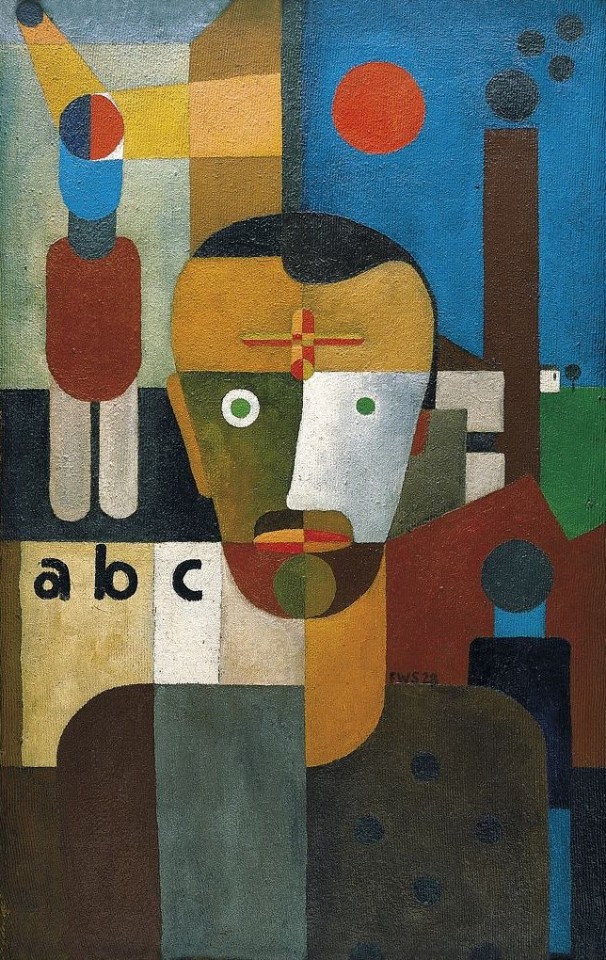
Franz Wilhelm Seiwert (1894-1933) — Selbstbildnis (oil on canvas, 1928)
90 notes
·
View notes
Photo
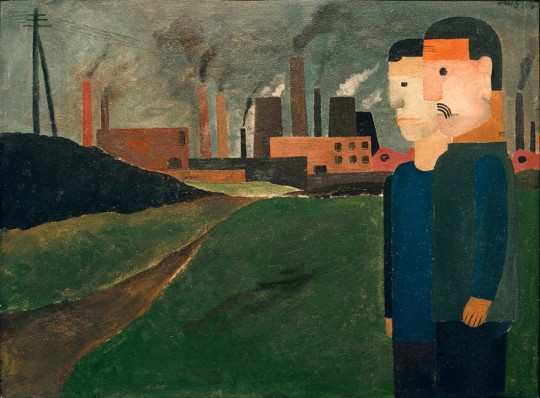
Industrial landscape with workers
Franz Wilhelm Seiwert
3 notes
·
View notes
Text
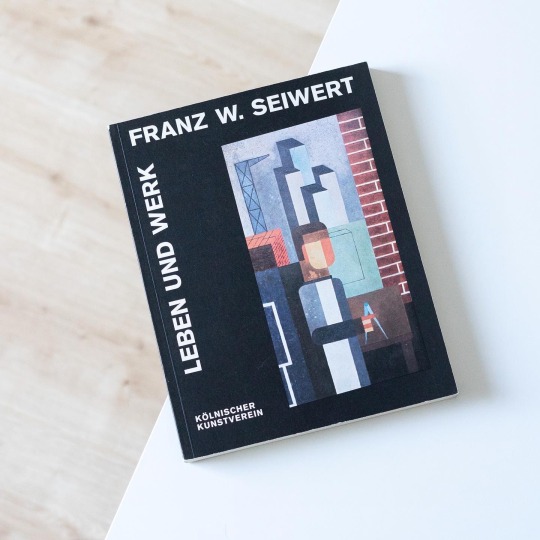

Together with Heinrich Hoerle and August Sander Franz Wilhelm Seiwert (1894-1933) formed the core of the „Kölner Progessive“, the avant-garde group of artists in 1920s Cologne. Seiwert was a very political, even radical, artist profoundly influenced by the writings of Karl Marx. In his work he addressed the social and political problems of the Weimar Republic, the outcasts, the condition of the workers and his own precarious existence as an artist. Still the key publication on the artist is „Franz W. Seiwert. Leben und Werk“, written in large parts by Uli Bohnen and published by Kölnischer Kunstverein in 1978. In a very thorough study Bohnen leads the reader through the artist’s different work phases, from his early surrealist/expressionist works over his involvement with Dada to his mature figurative constructivism. At the same the author also paints a portrait of the milieu in which Seiwert moved, the Cologne avant-garde of the 1910s and 1920s, highly political and decidedly left-wing. Seiwert untimely died in in 1933, a long-term consequence of him being contaminated by radiation at the age of seven and an accordingly weakened health.
The catalogue’s major part is made up of his work catalogue comprising 411 paintings, graphic works and sculptures. It is still quite irritating that there’s relatively little literature on Seiwert, let alone exhibitions dedicated to his work, a fact that I would love to see changed in the future since his and his fellow Cologne Progressives’ art provides a very pointed comment on interwar Germany.
#franz wilhelm seiwert#cologne progressives#art book#art history#avant-garde art#exhibition catalogue#vintage book#kölner progressive#german artist#book
41 notes
·
View notes
Photo



prints by German communist artist Franz Wilhelm Seiwert (1894-1933)
27 notes
·
View notes
Photo
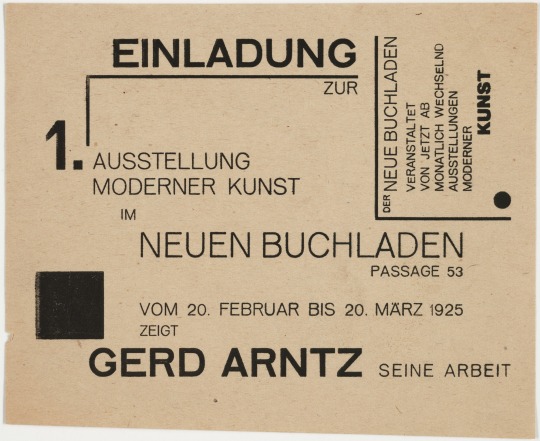
#Franz Wilhelm Seiwert#1925#Einladung 1. Ausstellung moderner Kunst im neuen Buchladen#Gerd Arntz#art#exhibitions
1 note
·
View note
Text

5 notes
·
View notes
